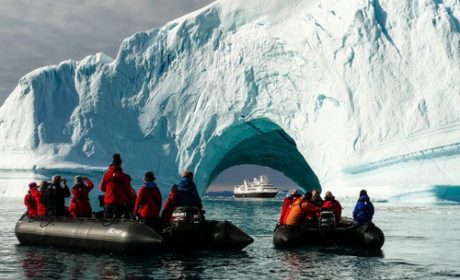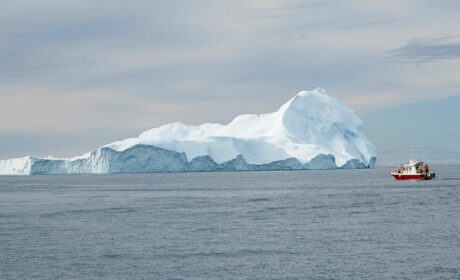When Alan and I explored Greenland on a Seabourn expedition ship, we were reminded of how fun it is to step back in time when we travel. And a visit to the Hvalsey Church ruins in Southern Greenland took us way back in time—all the way to the Norse settlements that thrived in the middle ages from the 10th through the 15th centuries AD.
When you think of a Greenland expedition cruise, you probably picture icy excursions, like the one we enjoyed in Ilulissat Icefjord, or zodiac rides that explore the iceberg graveyard at Red Island in Eastern Greenland’s Scoresbysund. But the island country is a treasure trove of Norse and Indigenous cultural sites, as well, such as the mysterious ruins we explored on Hvalsey Island.
Hvalsey Church was built in the early 14th century (possibly on top of older church ruins) on the farmstead that had been created in the 10th century by Thorkell Farserk, Eric the Red’s uncle. It is considered to be one of North America’s first Christian churches (Catholic). While it’s easy to assume that Greenland is in Europe, it’s actually on the edge of the continent of North America.

The Norse farmstead, part of the Eastern Settlement, was a major center of trade between the Norse settlers and the indigenous Thule people of the area who traded furs and ivory, much-valued items in Europe at the time. Even though the land in Southern Greenland was fertile, the Viking settlements slowly died out by the late 15th century. It is believed that the Norse/Vikings returned to more settled communities in Iceland and Norway.
How to Visit Hvalsey Church ruins
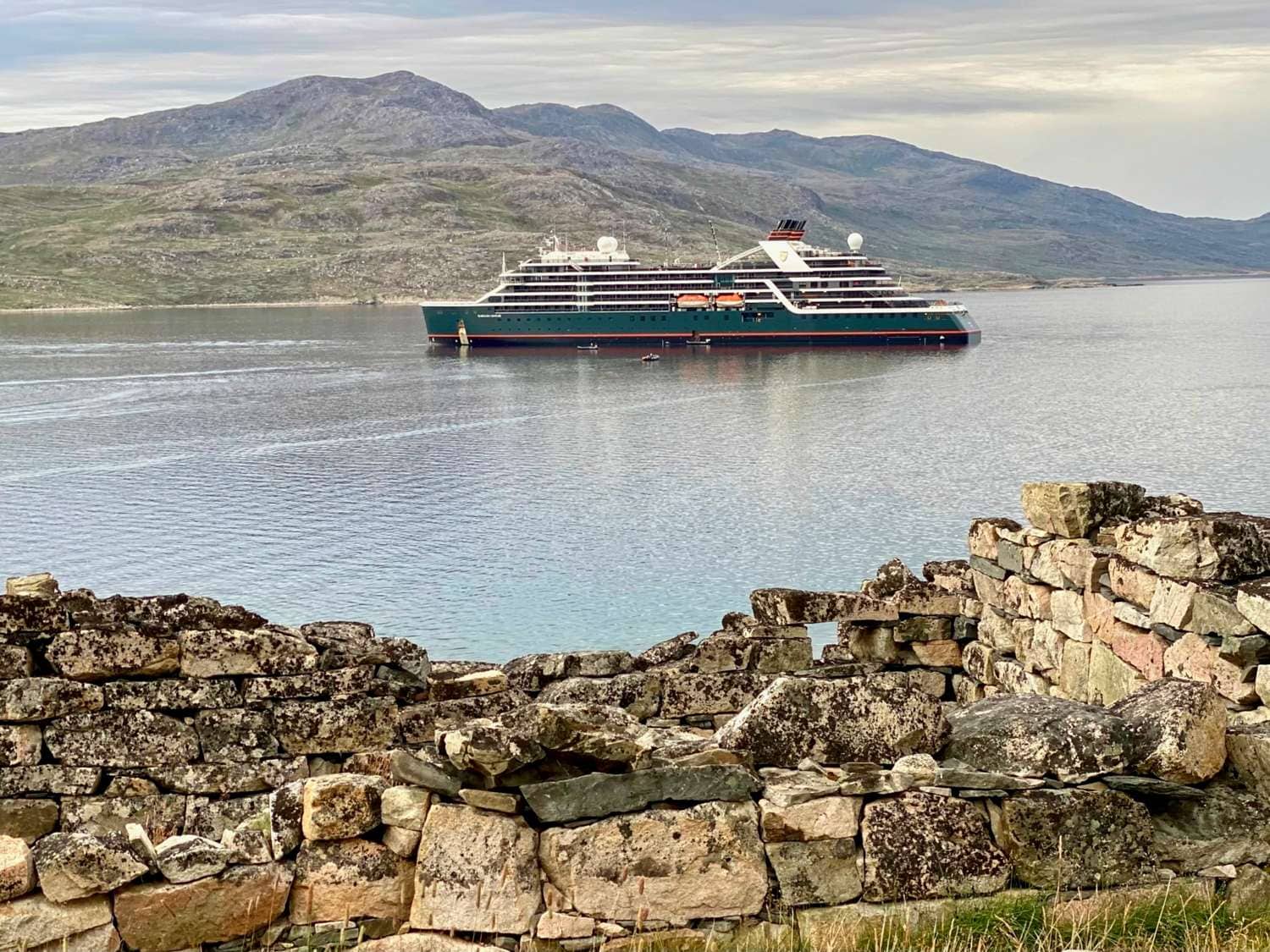
One of the best ways to visit Hvalsey Church is on an expedition cruise that explores Greenland. Your ship will anchor in Hvalseyjarfjord directly across from Hvalsey (Whale Island). And you’ll have plenty of time to wander the site at your own pace, without the constraints of an hour-long tour that needs to hurry to the next place on the itinerary.
If you are on a classic cruise that includes Qaqortoq, Greenland, the ship may offer excursions. Or, if time allows, book an independent excursion. It’s a 30-minute boat ride from Qaqortoq to the Hvalsey Church ruins. Helicopter tours are another option.
My experience touring Hvlasey Church ruins
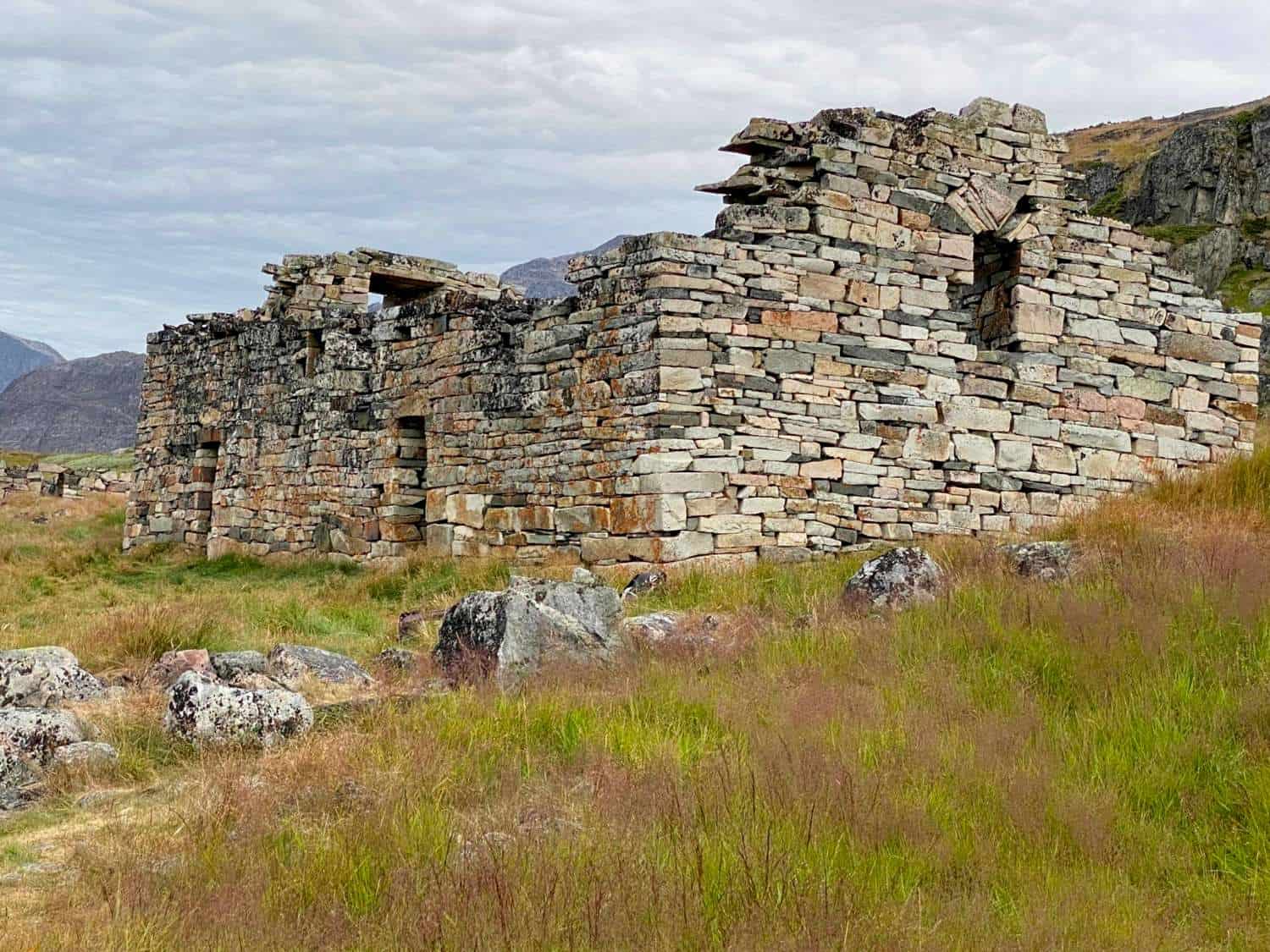
On a sunny September morning, the Seabourn Venture anchored in Hvalseyjarfjord across from Hvalsey (Whale Island), a UNESCO Kujataa Greenland site, where the thick, ashlar stone walls of Hvalsey Church still stand on a rolling hillside peppered with late-blooming Arctic wildflowers. Guests rode zodiacs to shore where we walked the trails among the ruins of Norse buildings or stopped to listen to lectures from expedition staff stationed at key points of the site.
Boomer Travel Tip
When traveling by zodiac, I always wear water proof pants because you never know how wet the ride will be. And conditions can quickly change. I also wore the boots provided by Seabourn because it’s impossible to know what to expect when stepping onto shore, even if the landing is supposed to be dry. Again, conditions change. The boots were fine for walking around the Norse settlement.
Hvalsey is a part of the Kujataa World Heritage Site
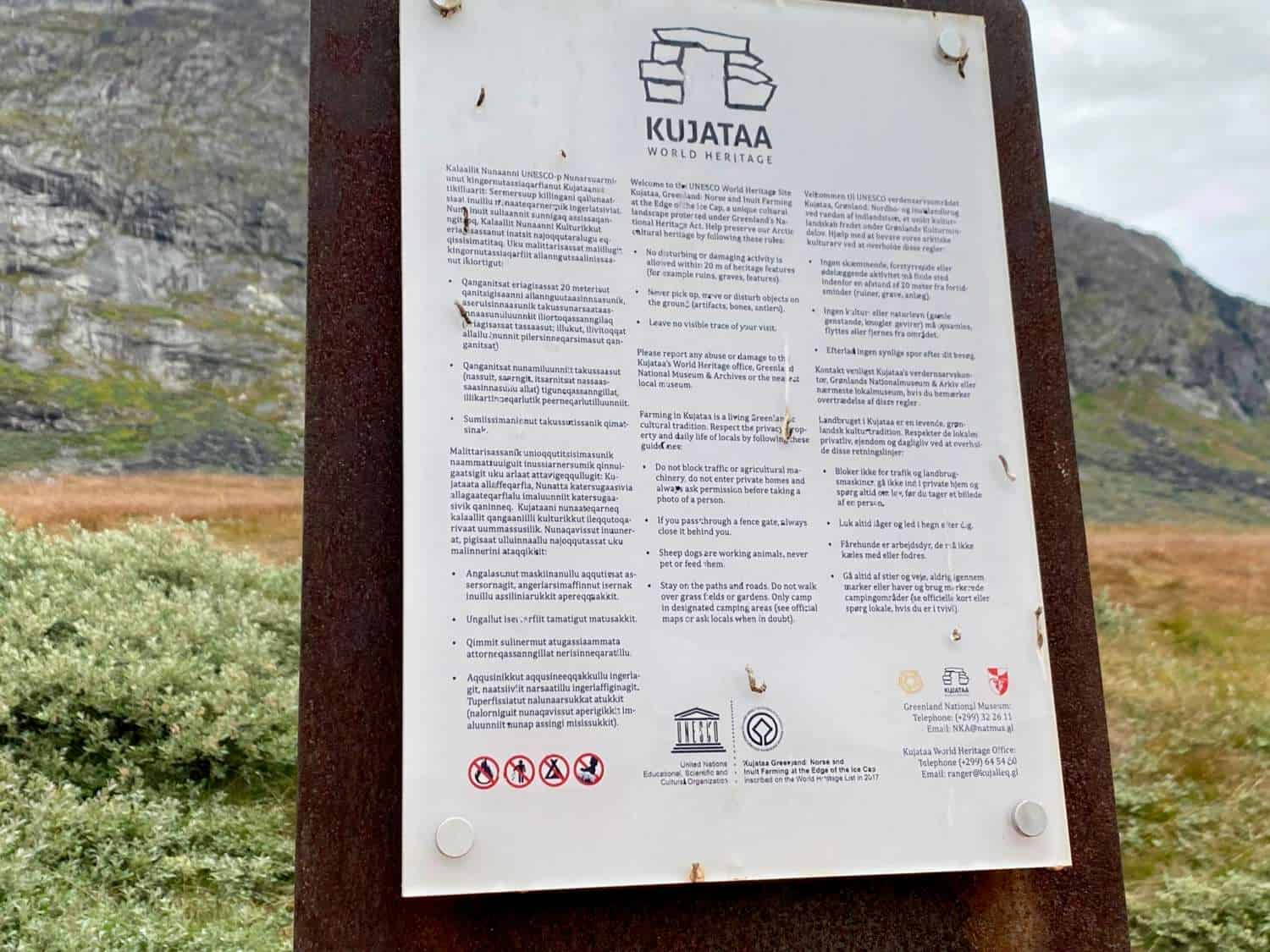
As I walked on a path up a slight hill, a sign greeted me to the Kujataa World Heritage Site where “Norse and Inuit peoples still farm on the edge of the Greenland Ice Cap.” Hvalsey is just one part of the 5 areas included in this designation.
These sites include Norse ruins, evidence of sub-arctic farming practices from the past as well as examples of current farming in the fertile South Greenlandic fjords. The government of Greenland also protects the region through the Greenland’s National Heritage Act, which preserves Arctic cultural heritage.
According to archaeologists, at it’s peak, the community included the church and at least 14 other buildings. Today, Hvalsey is the largest and most well-preserved Norse ruin in Greenland.
Learning about Hvalsey Church
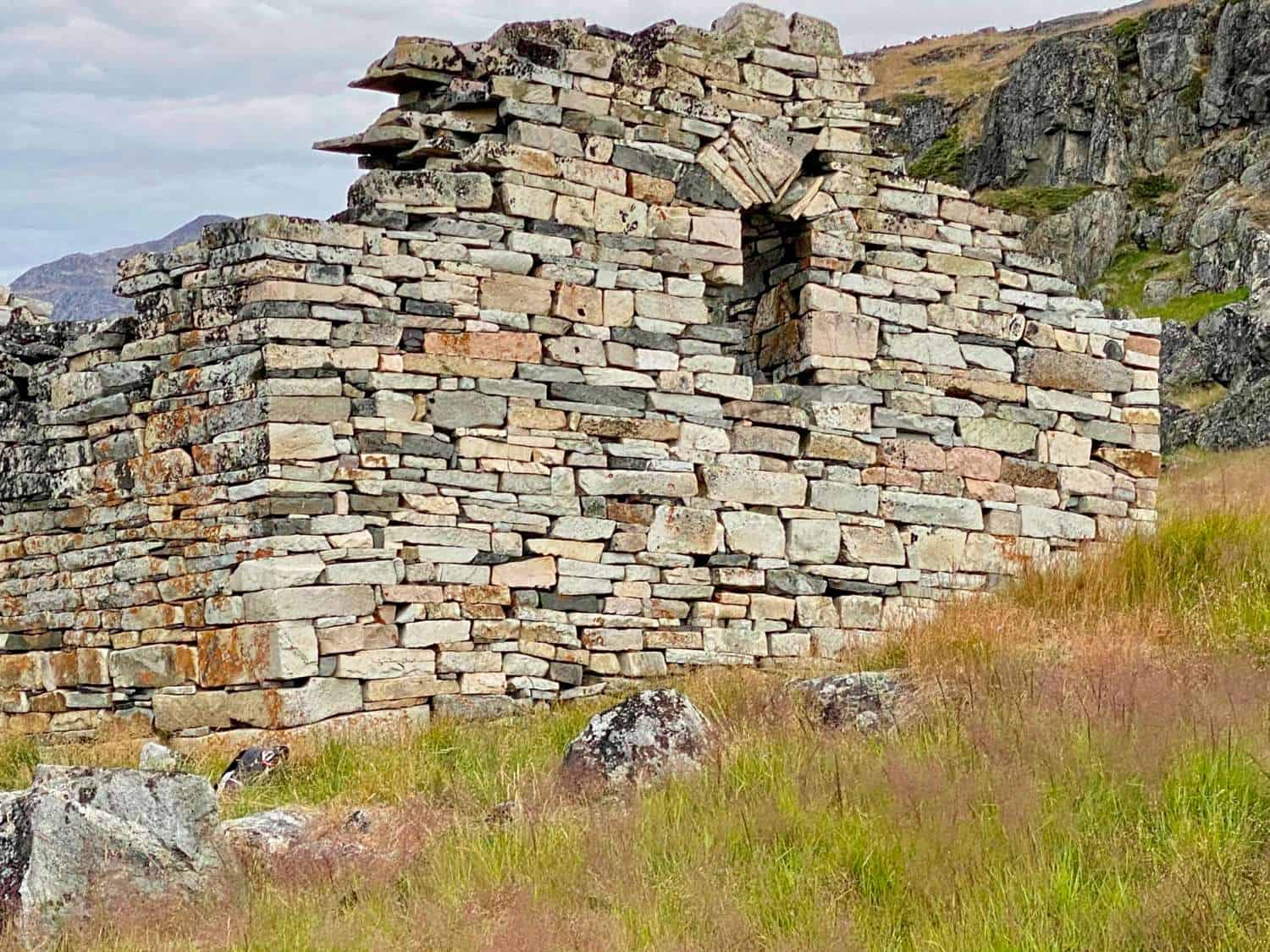
A path leads across a grassy hillside that looks out onto Hvalseyjarfjord and the mountains of Southern Greenland. Even if you aren’t interested in churches and history, the views are well worth the walk. And there’s plenty of opportunity to take photos of the stunning landscape.
When I arrived at the church, Peter Damisch, historian and expedition staff member, was stationed inside the well preserved ruins to explain the construction and history of the church.
Four stacked stone walls still stand ranging from 15 to 20 feet high. With a thickness of almost 5 feet…some of the stones weigh 5 tons…the walls of this church have thankfully stood the test of time. There is speculation that Hvalsey might have been built by Scots-Norse stonemasons due to similar structures found in Norway and Orkney.

The Hvalsey church building has three entrances and two window openings. If I had been visiting in the time of Hvalsey’s hey-day, the windows would have been stained glass. I would have seen a turf-covered wooden roof. And the exterior would have been whitewashed with ground mussel shells. What a grand site it must have been in those medieval times.
Exploring a medieval Norse farm estate
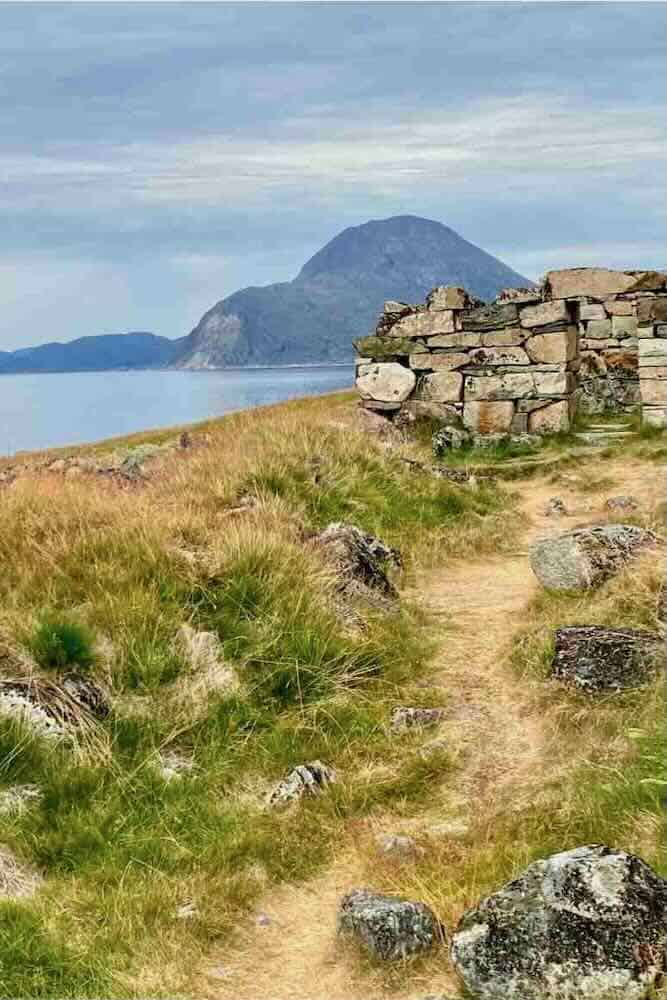
Piles of rocks, half buried in grass, are scattered about the site, remnants of a prosperous medieval Norse estate farm. From the church, I walked a narrow path to the west that led to the stone wall ruins of the banquet hall, which had been part of a large residential complex.

According to an informational sign at the site, “large estate farms like Hvalsey were centers of law, trade commerce, and religious life.” The estate would have had tenant farms in the surrounding fjords who would have been required to pay taxes to the estate owner.
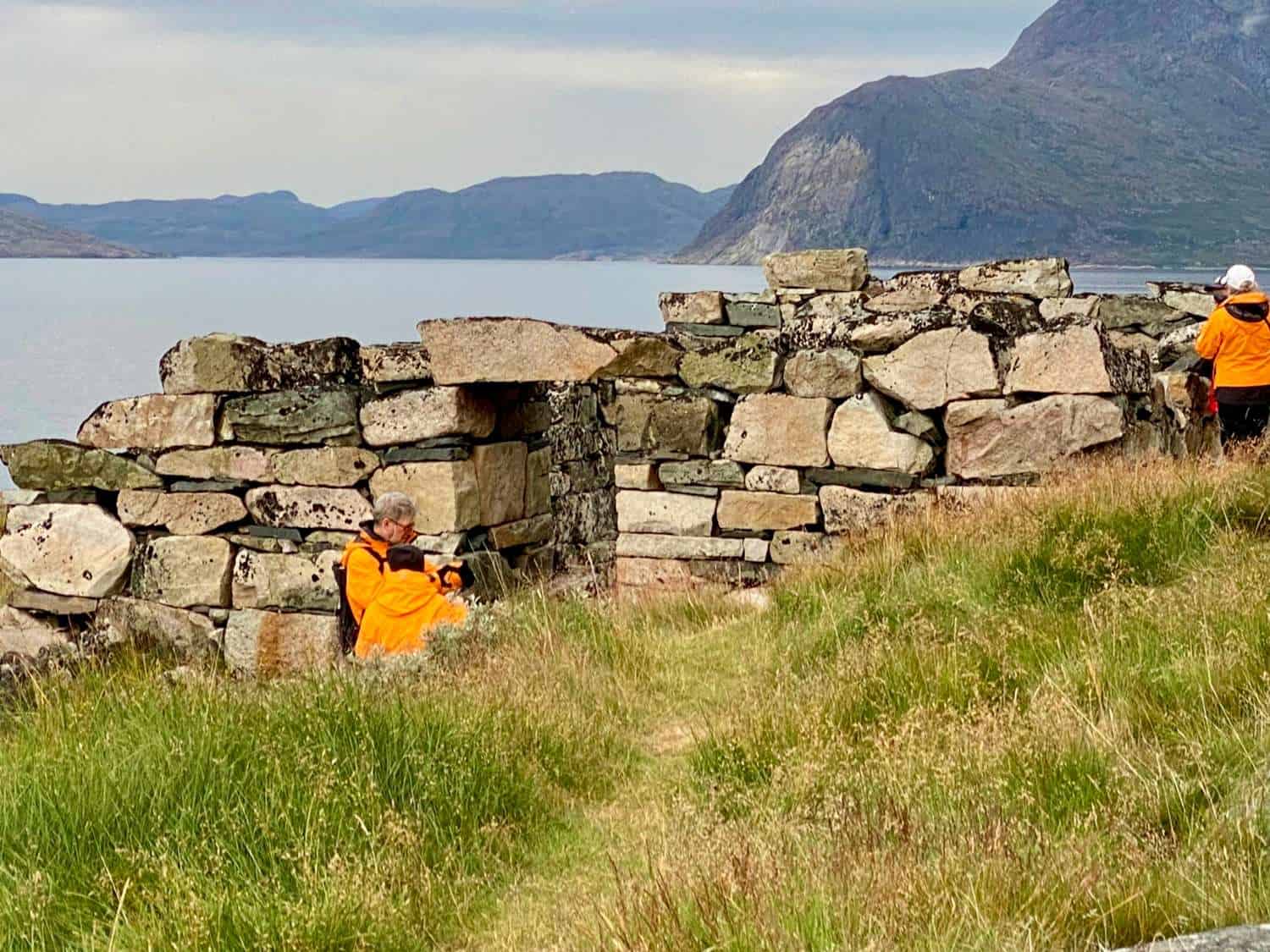
The last written record of life in the community was the wedding of Thorstein Olafsson and Sigrid Björnsdóttir on either 14 or 16 September 1408. The couple later moved to Iceland.
And that’s the last we know of life in Hvalsey and the Norse period. The community’s demise remains a mystery, although there is a legend of Inuits attacking Hvalsey and burning the residents in their homes. However there is no archaeological evidence of this event.
In 1721, an expedition led by Danish-Norwegian missionary Hans Egede found that the Norse colonies in Southern Greenland had disappeared.
After wandering at my leisure in this beautiful part of South Greenland, I returned to the zodiac boarding site for the ride back to Seabourn Venture. What a lovely way to spend the morning.


